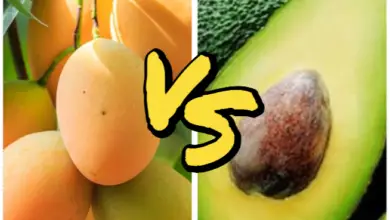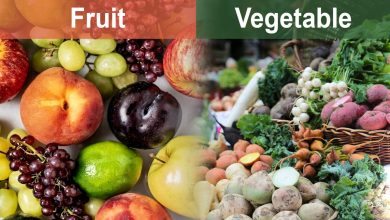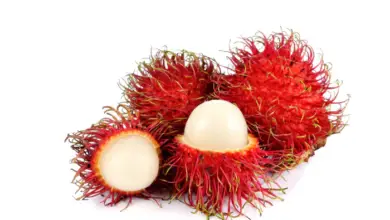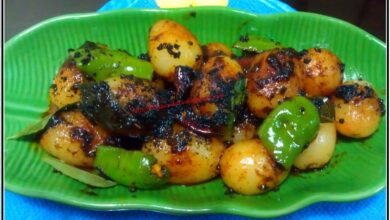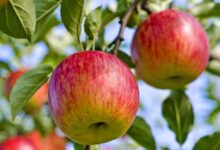Difference Between Fruit Flies And Gnats: 7 Key Differences
Have you ever gone into your kitchen and seen little flying insects around your fruit basket and wondered whether they are fruit flies or gnats? They might seem the same at a quick look, but there are actually a bunch of ways they’re not alike. Knowing these differences can help you figure out which one you’re dealing with, so you can take the right steps to handle them.
Table of Contents
Fruit Flies

Fruit flies are tiny bugs, about 2 to 4 millimeters in size. They’re kind of round and usually have red eyes. Fruit flies love to hang around ripe fruits, things that are fermenting, and sweet stuff in general.
They lay lots of eggs in soft fruit and veggies, on spills that are sticky, and in drains. They really like wet places with food that’s going bad to lay their eggs. These flies are also drawn to lights and don’t fly in a straight line – they zigzag around. When they start taking over your kitchen or pantry, it gets really annoying, especially when they swarm around your fruit or a wine spill. You can manage them with cleaning and traps.
Gnats

Gnats are a bit larger than fruit flies, about 5 to 6 millimeters, and they have long, skinny bodies. They’re usually a dark color, like black or gray. Unlike fruit flies, gnats don’t really eat food. They feed on little bits of organic stuff, fungus, bacteria, and sweet plant juices. Female gnats lay their eggs in wet soil instead of on food.
The best places for them to breed are in wet soil, plants in pots, compost, and areas with grass. Gnats don’t like bright lights and they move around quickly. If you have gnats, you might see them flying around plants or green areas. To get rid of them, drying out the soil and moving air with fans can mess with their breeding. Sticky traps can help control the number of gnats too.
1. Size Difference Between Fruit Flies and Gnats
One big thing that’s different between fruit flies and gnats is how big they are. Fruit flies are really small, usually 2 to 4 millimeters long. Gnats are a bit larger, with a size of about 5 to 6 millimeters.
If you spot a teeny-tiny insect flying around, it’s probably a fruit fly. If the bug is closer to 5mm, then it’s probably a gnat. This small difference in size can help you tell them apart with your eyes.
2. Body Shape and Appearance
When you look closely, the shape and look of their bodies also help tell fruit flies and gnats apart.
Fruit flies are kind of round and often have red eyes with a body that’s yellowish-brown. They might also have light bands on their tummy.
Gnats look more stretched out and thin. They’re usually a dark shade, like black or gray, and sometimes their wings look a bit see-through.
Looking closely at their shape and colors can show you the difference. Fruit flies are more round and lighter in color, and gnats look skinny and darker.
3. Egg Laying Behaviors
Where fruit flies and gnats lay their eggs tells you a lot, too. It can give you hints about where they’re coming from.
Fruit flies lay eggs on fermenting stuff and food that’s getting soft. You might see up to 500 tiny eggs that look like dust on fruits, vinegar, pipes, bottles, and cans.
On the other hand, gnats lay their eggs in wet organic soil – not on foods like fruit flies do. You’ll find their eggs in plant pots, grassy places, or compost heaps.
Eggs on your food surfaces usually mean fruit flies are around. But if you see eggs in the soil, gnats might be your problem.
4. Food Preferences
What these pests like to eat is another clue to tell them apart. Fruit flies are all about ripe fruits, juice spills, things that have started to ferment, and sweet stuff. They love the smell of vinegar and fruit.
Gnats aren’t as interested in food. They eat bits of things that are organic, like mushy stuff, fungus, bacteria, and sweet juices from plants.
If you’ve got small flies coming towards food and spills, fruit flies are probably to blame. But if you have tiny black flies around your plants and soil, those are likely gnats.
5. Breeding Environments
Different homes for breeding also set fruit flies and gnats apart.
Fruit flies love places with fruit and vegetables that are going bad. They breed in spills, old wine, cans, bottles, and trash cans too. Their eggs need moist spots to mature.
Gnats need moist soil to breed. They lay their eggs in the top layer of soil, not in food like fruit flies.
If you notice flies after your fruit gets overripe or after spills, those are possible fruit flies. But when plants or lawns seem to be where the flies are coming from, you’re likely dealing with gnats.
6. Light Sensitivity
How fruit flies and gnats react to light is also different, and this can help you guess what you’re dealing with.
Fruit flies go towards light sources, like small lamps, bright kitchen windows, or nightlights. They’re attracted to the brightness.
Gnats, though, prefer to stay away from powerful light. They fly away from sunny windows or bright lamps, tending to like less light.
If the tiny insects are attracted to light places, those are fruit flies. Gnats don’t like bright lights, so they do just the opposite.
7. Speed of Movement
Fruit flies and gnats also move differently. Fruit flies tend to fly in a sort of zigzag or wobbly pattern, and they’re slower than gnats.
Gnats are known to dart around quickly. So, if you see quick-moving bugs near houseplants or shady spots, they’re probably gnats. But if you observe insects that seem to float about lazily in the air, taking their time, those are likely fruit flies.
Now that you know the differences, you can tell if those pesky little bugs in your home are fruit flies or gnats, and take the right action to say goodbye to them!
You can tell the difference between fruit flies and gnats by watching how they move. Look at their speed and the way they fly.
Fruit flies fly slowly and don’t go straight. They drift around places where there is food, moving side to side, not making sudden or fast moves.
On the other hand, gnats are quicker. They zip around and can quickly go in different directions while flying. Gnats are much faster and unpredictable when they fly compared to fruit flies.
Keep movement in mind when trying to figure out which is which. Slow-moving flies are probably fruit flies. If they move in a fast and jerky way, they are likely gnats.
Summary of Differences:
Here’s a quick summary of the main differences to look out for:
- Fruit flies are small, about 2 to 4mm in length, while gnats are a bit bigger, measuring around 5 to 6mm.
- A fruit fly’s body is rounder, like a ball, but gnats have longer and thinner shapes.
- Fruit flies lay their eggs on food that’s going bad, like rotting fruits. Gnats lay their eggs in wet dirt.
- If you notice flies around ripe vegetables or the smell of vinegar, they might be fruit flies. Gnats, however, are drawn to plants, flowers and decaying matter.
- For breeding, fruit flies choose overripe fruit or spilled sweet drinks, whereas gnats prefer moist soil for laying their eggs.
- Fruit flies like to be around light. Gnats, however, do not like bright light and tend to stay away from it.
- The way they fly is also different; fruit flies have a slow, wandering flight, but gnats move in a fast, zigzagging manner.
By looking at these physical and behavioral traits, you can figure out if you are dealing with fruit flies or gnats. Watching these little flies carefully and seeing the different qualities they have helps you to determine which type you have. Knowing which one is causing trouble means you can use the right methods to keep them away.
Conclusion
Although fruit flies and gnats can look a lot alike, there are important differences between them. Noticing their size, shape, what they like to eat, where they prefer to have their babies, and how sensitive they are to light can help you tell them apart.
Recognizing these unique features makes it easier to identify these tiny flies. Once you know which type is bugging you, you can find out where they are coming from and get rid of them effectively. So, the next time little flies start to become a bother, look for these signs to figure out if you have fruit flies or gnats around.

